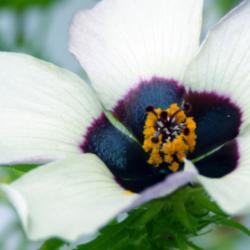Supervisor
Professor Beverley Glover
Brief Summary
This project aims to understand how and why some flowers produce iridescent, angle-dependent colours on their petals.
Importance of Research
The enormous species diversity of the angiosperms was described by Darwin as “an abominable mystery”. Part of the explanation lies with the ways in which different plant species are reproductively isolated from one another, as a result of divergence of floral morphology and consequent differences in their interactions with pollinating animals. This project aims to understand a novel way in which flowers attract insect pollinators: the production of iridescent colours using nanoscale sculpturing of the petal surface. We will explore how an iridescent flower develops, and how a naturalised iridescent weed interacts with native pollinator species. This project will not only be important in understanding plant-pollinator interactions, but may also inform approaches to generate structurally coloured materials for a range of applications.
Project Summary
This project aims to understand both how and why some flowers produce iridescence. Iridescence occurs when the colour of a surface appears different when that surface is viewed from different angles, and can only be produced using structural methods, not pigments.
You will study the mechanisms by which iridescence is generated, using molecular genetic techniques in our model system Hibiscus trionum. Hibiscus trionum is a naturalised weed across much of Europe and North America. We will assess which pollinator species interact with it in 2 European field locations. We will then use mutants generated from the molecular development work to explore how the presence of iridescence influences those interactions.
What will the successful application do?
Your project will focus on identifying the genetic basis of floral iridescence and assessing how it contributes to pollination in Hibiscus trionum.
- We are conducting a mutant screen to identify genes involved in the formation of cuticular folds which generate iridescence in Hibiscus trionum. We have already identified 2 mutant lines with reduced iridescence. You will continue to screen for new mutants, conduct genetic and phenotypic characterisation of mutant lines, and use bulk segregant analysis to identify mutated genes.
-
Hibiscus trionum is native to tropical and subtropical regions of the Old World, but has naturalised across Europe and North America. We do not know what pollinates it. You will identify and quantify floral visitors and true pollinators in replicated field plots in Cambridge and in southern Europe.
-
You will conduct a field trial in Cambridge to compare pollinator response to wild type Hibiscus trionum and non-iridescent mutants from the mutant screen.
-
You will characterise the function of genes identified from the mutant screening and bulk segregant analysis using transgenic approaches in H. trionum.
Training Provided
The student will be given training in fieldwork analysing pollinator visitation and behaviour, including insect identification. In the lab they will learn light microscopy and scanning electron microscopy, in genetic analysis of trait development, DNA/RNA extraction, Illumina sequencing, PCR, cloning, expression analysis (including quantitative RT-PCR) and plant transformation.
References
- Moyroud, E., Wenzel, T., Middleton, R., Rudall, P.J., Banks, H., Reed, A., Mellers, G., Killoran, P., Westwood, M.M., Steiner, U., et al. (2017). Disorder in convergent floral nanostructures enhances signalling to bees. Nature
- Moyroud, E., Airoldi, C., Ferria, J., Giorio, C., Steimer, S., Rudall, P., Prychid, C., Halliwell, S.,Walker, J., Robinson, S., Kalberer, M. & Glover, B.J.(2022)Cuticle chemistry drives the development of diffraction gratings on the surface of Hibiscus trionum petals. Current Biology32,5323-5334

